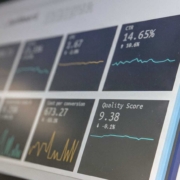Inventory management optimization.
Inventory management is indispensable to take control of your supply chain. Not only from a cost point of view, but especially from a service and reliability to your customers. Five important elements are explained below.
Analyze your range
Every company has to deal with it. Increase in range. Not only in product type but also the increase in SKU at product level. This rapidly increases the complexity of your inventory management. But do you really need all those products and SKU?
An ABC analysis is the first step. Make an overview of your range and SKU and determine which products add value [margin] and which do not. Find the cold spots in your range. That means some products and/or SKU are being phased out. You should structurally include this approach in your monthly review of your stock. Certainly at a strategic level in consultation with Sales and Purchasing.
The correct information
Most companies have no problem with the amount of data they collect from their software systems. But to what extent is this data actually information that you can use to steer?
Analyze and determine what data you really need. Make sure that data is also accurate. Systems have often been contaminated over the years. Or that definitions and calculations have changed. This quickly gives you a false impression. Appoint employees responsible for managing your data [data analysts]. They ensure consistency and reliability of your data. It must be clear from a strategic level which data is relevant and which is not. This brings us to the next point.
Measuring performance
To determine the performance of your organization, correct and reliable information is essential. This is where the elements of your inventory management come together. It determines your decision-making and strategic direction of your organization in relation to your stock, etc.
Clarity about the business strategy is therefore important, as indicated earlier. Strategy can be used to determine the frameworks for your inventory management within which the organization operates. On this basis, good performance measurement can be achieved with the right data [KPI]. Naturally, you monitor this frequently. You can also further refine your analyzes and adjust course where necessary.
External
If you gradually control and optimize your inventory, collaboration with external parties cannot be ignored. Joint control of both parts of your supply chain is an important condition to keep your stock optimal. Suppliers often change the unit composition of their product. If you are not informed about this in time, your stock will quickly go out of line.
So take a good look at where your critical points are and at which supplier/customer. You determine joint objectives in collaboration with the external party. Make sure that tasks and responsibilities are properly divided and identified on both sides. So link your employees to the employees of your supplier / customer. You regularly consult on the progress of the collaboration, achieving objectives and research into further optimization.
Conclusion
Inventory management is essential for the performance of your organization. However, it is not a static situation but a very dynamic environment. The constant changes in the market, products, compositions, developments at third parties, require that inventory management, managed by the supply chain manager, must be addressed at the highest level.
Read also:









